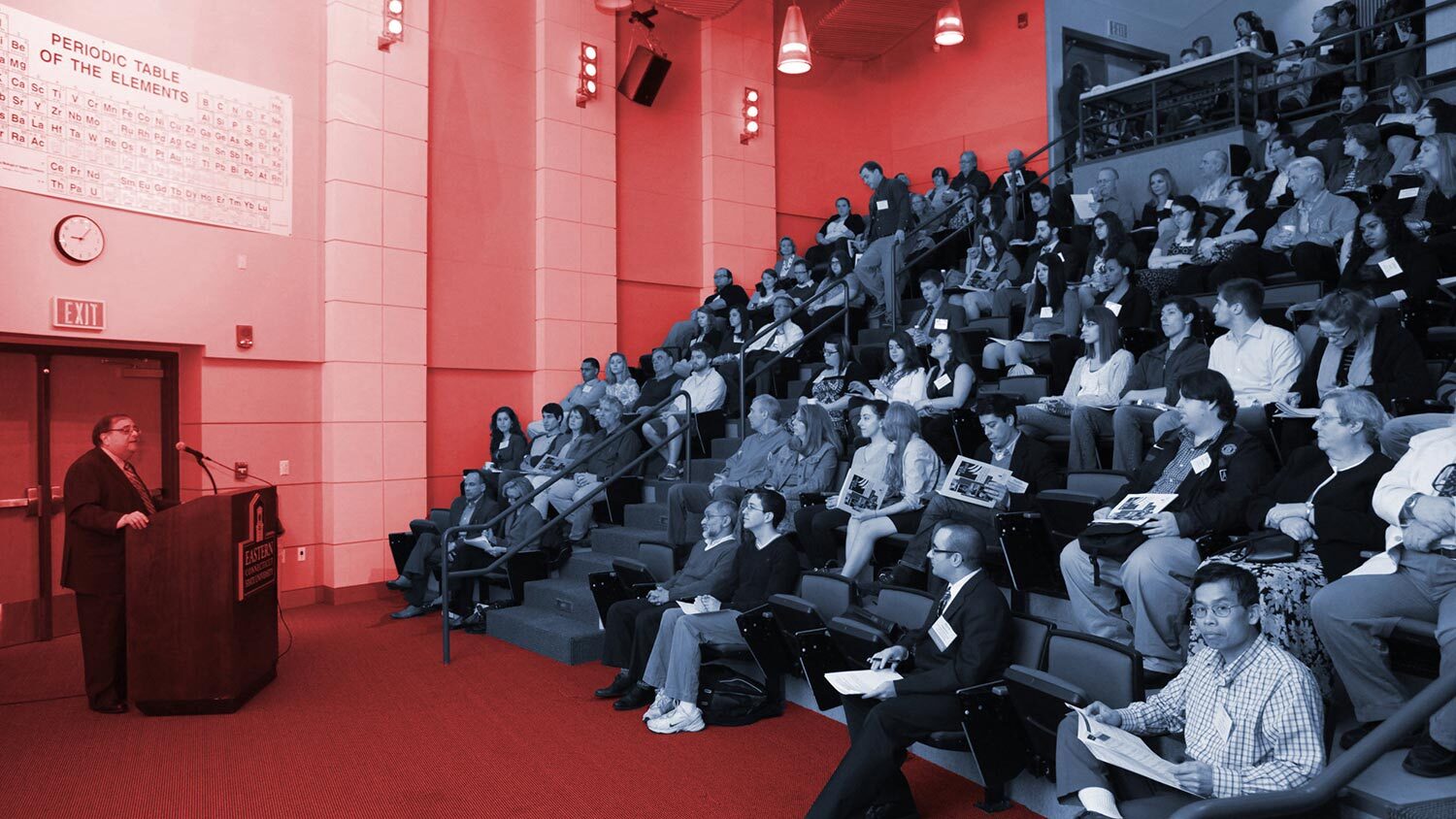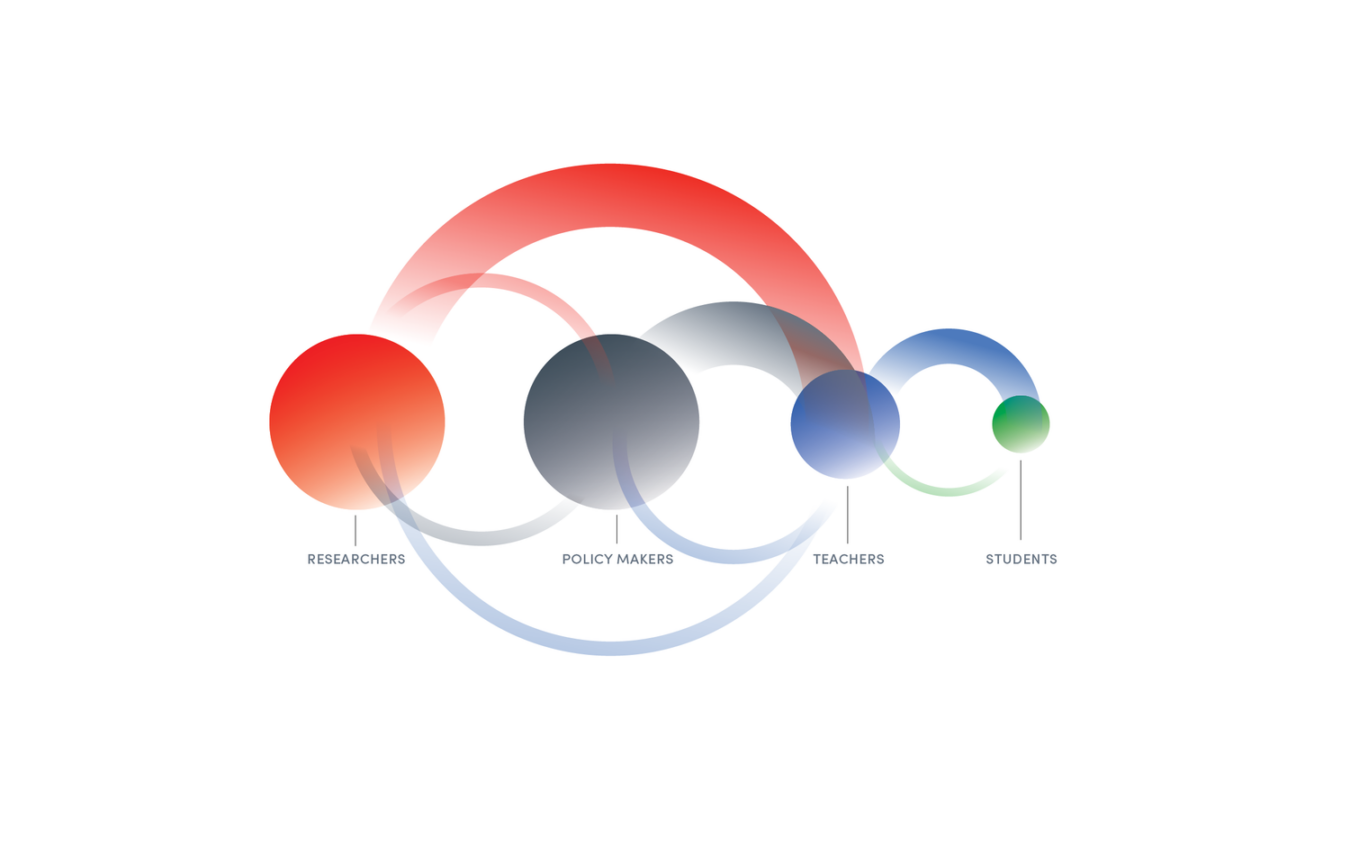Revealing the Underlying Power Dynamics in the Teacher-Research Gap

Educational and pedagogical research is abundant. It accumulates in journals, academic texts, and newsletters. Experiences and knowledge from classroom practice are often equally valuable. However, neither teachers nor researchers seem to be able to bridge the daunting communication gap between them.
In theory, education researchers and teachers have a similar goal: to discover and use methods that produce the best outcomes for students in a learning environment. In practice, however, researchers and teachers often exist in silos, lacking a defined communication channel by which to relay their findings to each other.
Why is this? And why have previous attempts to untangle the seemingly intractable problem of disjointed, sporadic, and unidirectional communication proven fruitless?
It turns out that the problem is more complex than ineffective communication. As Dr. Jal Mehta observes in the Transforming Teaching White Paper, researchers generally conduct and write research for other researchers to read. Teachers, through experimentation and practice, develop novel and effective pedagogical methods. But there is little incentive and few effective platforms to share this knowledge with researchers. Consequently, a wealth of knowledge accumulating from both researchers and teachers remains unexchanged.
Maybe the wrong questions are being asked. Maybe long-held assumptions about the problem need to be challenged. This is where design thinking comes in.
Design thinking is a creative problem-solving methodology with an emphasis on building empathy for stakeholders through listening, observing, and asking questions before generating solutions. Design thinking digs deeper to uncover who or what is at the heart of an issue, rather than immediately searching for answers. Understanding the depths of an issue is incredibly powerful when exploring potential long-term solutions.
To investigate the teacher-researcher communication gap, I worked with Openbox, a New York-based design and innovation consultancy that works toward deconstructing complex, community-centric and organizational challenges. We accessed the diverse perspectives and skillsets of the Openbox team, which comprises individuals with vastly different backgrounds, including an architect, an educator, graphic designers, a writer, and a city planner, among others. The thinking is that diversity of disciplines, thought processes, and experiences contributes to more creative ways of approaching conventional quandaries.
The original design challenge we explored was, “How might we build a set of intermediaries that deliver evolving knowledge about teaching?” In other words, the assumption was that education doesn’t have enough messengers and that we need to build better and more channels of communication.
However, the group quickly saw this as a false premise, perceiving the problem to be deeper than it had been framed. Thus, the discussion did not focus on finding a definitive answer to this particular design challenge. Instead, we focused on first understanding the various stakeholders at hand and the system dynamics at play.
We began by asking slightly different questions, such as “What would the issues look like framed from the teacher’s perspective?” and “What would happen if the researcher-teacher relationship was designed with greater empathy?” — as opposed to ignoring or giving passing attention to important variables like personalities, cultures, and environments.
The restructured questions were meant to inspire our generative abilities while maintaining the essence of the original design challenge. The new “how might we” questions were designed to explore how (and whether) teachers and researchers relate, and where both parties exist within the broader educational ecosystem.
It quickly became apparent to us that the teacher-researcher communication issue is dynamic, complicated by competing motivations, disparate performance measures and channels of accountability, a lack of reciprocity, limited awareness, and large discrepancies in social hierarchy. In short, the existing system is neither designed for researchers to effectively relay their findings to teachers nor for teachers to communicate their knowledge about teaching to researchers. There is a lack of perceived partnership and accountability between seemingly symbiotic practitioners. Consequently, disseminating research about teaching to teachers is far more complex than simply creating intermediaries.
Building on previous work the Openbox team had done in the education sector and drawing on the team’s diversity, the group worked collectively, using multi-colored sticky notes and markers, to generate ideas and analogs exploring the teacher-researcher relationship. The team very intentionally articulated and shared ideas in a visual format, using sketches on the sticky notes to encapsulate and later cluster their ideas into bigger themes.
We realized not only that the current research-to-classroom pipeline is ineffective; it also doesn’t consider the student perspective or role in the system. The communication problem is essentially a systemic design flaw, currently using an ineffective design to get information from one invested group to another — often unidirectionally, from researcher to teacher.
When we did eventually start generating solution-oriented ideas, some were quite novel. For example, one idea was to create a Google Translator-like application that translates academic research into accessible, implementable language. Another was to form a teacher/researcher book club to get stakeholders in the same room on a steady basis, providing a forum for ongoing dialogue and building empathy for each other. As the session progressed, it became evident that brainstorming in the large group was helping to unearth other, deeper issues engendering the lack of effective communication.
After the first session, we organized our ideas and insights into themes and issues. Seven different issues emerged: awareness, access, lack of alignment, accountability, reciprocity, permission, and student involvement.
Then we began to explore potential solutions. Potential solutions to issues of accountability drew inspiration from analogs in financial reporting and consumer watchdog groups. Examples from farming, user experience, and healthcare were brought forth as analogs for the issue of research being disconnected from classroom practice. Innovations from art, media, and retail start-ups yielded insight into the lack of effective communication.
Issue clusters were not mutually exclusive — many of the sticky notes applied to multiple issues — and each issue likely merits its own brainstorm and contemplation. Three general categories emerged. The issues within each category can be commonly defined by discrepancies of power that create hierarchies and unidirectional communication flows:

- The first exists between researchers and teachers and includes issues of accountability, access, lack of alignment, and reciprocity;
- The second exists between teachers and policy makers and includes issues of awareness, accountability, and permissions;
- The third exists between students and teacher/researchers and encompasses student involvement and reciprocity.
In the first category, teachers’ and researchers’ job performances are measured by different metrics and systems. Their professions are also regarded differently in society. This forms a disconnect. There is also a lack of reciprocity and accountability between researchers and teachers: Researchers are not accountable to teachers to create valuable, implementable, pertinent research, and teachers are not beholden to researchers to ensure the research is applied as intended — or at all.
In the second category, teachers are given very little latitude or permission from policy makers to select research to implement in their classroom. In the third category, students are silent stakeholders in the process and are rarely asked to be involved.
A number of the ideas we generated, each with a varying degree of plausibility, explored ways of diffusing power struggles by creating transparency and connectivity. One such idea, which leveraged the viral nature of pop culture, was to create a reality TV show that contextualized research within a classroom and that documented and broadcasted the process and outcomes. Another was having an after-school research club — à la Model U.N. or Spanish Club — where students and teachers work with researchers on topics selected by students.
Again, as we further explored the power dynamics within the system, it became clear the original design challenge was ineffectively framing the issue. The question, “How might we disseminate to educators what we are learning about teaching?” is inherently biased towards researchers. It situates the researcher-teacher gap as an issue to be considered within the current status quo, and it fails to acknowledge or question the hierarchical position researchers are granted in relation to teachers. In its original form, the design challenge does not question whether teachers find the research valuable, interesting, or desired. Therefore, a human-centric design to improve communication would likely foster collaboration and dialogue among the groups and improve teacher-researcher relationships.
During our second brainstorming session, we also realized the original “how might we” question posed in the design challenge assumed that the issue of disseminating quality research to teachers is a problem with the intermediary. It does not allow for the possibility that the issue extends beyond delivery, but rather, all the way to the researcher-teacher relationship. Thus, at the completion of the second brainstorming session, we generated a batch of new “how might we” questions:
- How might we create a system in which researchers and teachers work together to create, conduct, and implement high-quality research?
- How might we reduce the hierarchical nature of the teacher-researcher relationship?
- How might we create a common language between researchers and teachers?
- How might we leverage teachers’ experience to inform the type of research being conducted?
- How might we create space for students’ voices and ideas in the research process?
With these new questions that delve deeper into the challenges of information sharing among researchers and teachers, we might make headway in designing educational systems that ultimately benefit students, teachers, and researchers.
Educational researchers are making incredible breakthroughs on how to improve the educational outcomes of learners. And teachers are continuing to dedicate their time and profession to figuring out ways to improve their practice, and consequently, to improve the educational experience for their students. Too often, quality pedagogical knowledge from both teachers and researchers is ineffectually communicated across groups. A brief design thinking exercise may have helped to define this problem in a different way.
There is great promise for approaching difficult educational challenges from a design thinking perspective because it, by design, puts humans — the teachers, the researchers, and the students — at the center.
Craig Brimhall is a business instructional designer at Knod and an adjunct professor at Dixie State University in Utah. His past work includes consulting at Openbox, an innovation and community impact firm, working as an admissions advisor at Utah Valley University, and spending time in Australia working for Major League Baseball International. In 2015, he graduated with his Ed.M. from the Mind, Brain, and Education program at the Harvard Graduate School of Education. Craig is interested in how systems and organizations change despite institutional inertia and tradition. Craig can be reached with comments, inquiries, and feedback at cibrimhall@gmail.com.
Transcend supports communities to create and spread extraordinary, equitable learning environments.

